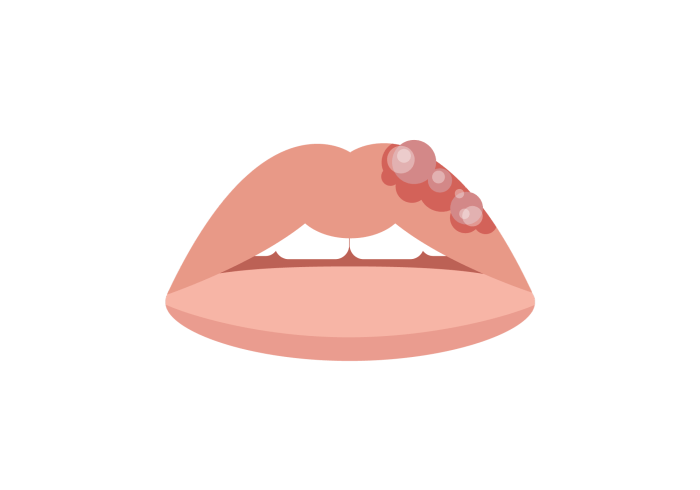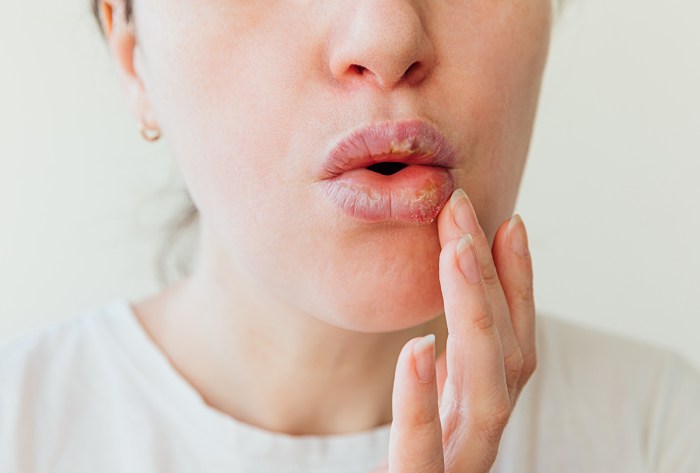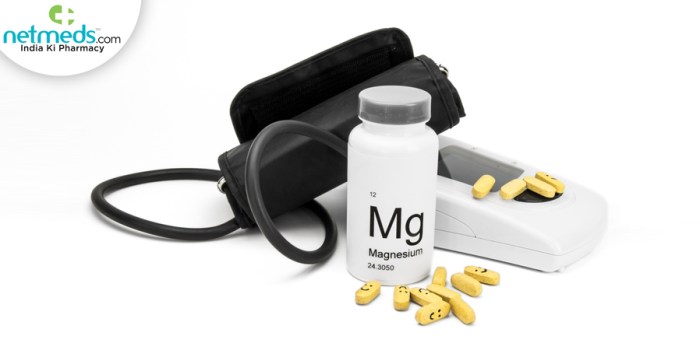Whats new in colon cancer prevention? This comprehensive guide delves into the latest strategies, highlighting dietary changes, exercise routines, and the crucial role of early detection. We’ll explore emerging research and trends, while also considering lifestyle factors beyond diet and exercise, providing a holistic approach to colon cancer prevention for various populations.
From understanding current prevention strategies to exploring emerging research, this article provides a clear and detailed look at the most recent advancements in colon cancer prevention. We’ll break down the science behind dietary recommendations, exercise benefits, and screening procedures, offering practical advice for individuals looking to reduce their risk.
Overview of Colon Cancer Prevention
Colon cancer, a prevalent and potentially life-threatening disease, is a significant public health concern. Fortunately, numerous strategies exist to reduce the risk of developing this condition. These strategies range from lifestyle modifications to early detection and screening protocols. Understanding these methods is crucial for proactive health management and improved outcomes.
Current Strategies for Colon Cancer Prevention
Current strategies for colon cancer prevention are multifaceted and involve a combination of lifestyle changes, screening, and sometimes medical interventions. These approaches are aimed at minimizing the development of precancerous polyps and cancerous tumors in the colon. Early detection and treatment of precancerous polyps are key elements in prevention.
Role of Lifestyle Factors in Colon Cancer Prevention
Maintaining a healthy lifestyle is paramount in colon cancer prevention. A balanced diet, regular physical activity, and maintaining a healthy weight significantly impact the risk of developing colon cancer. The specific mechanisms through which lifestyle factors influence colon cancer risk are complex and involve interactions among various biological processes.
Importance of Early Detection and Screening
Early detection and screening play a critical role in colon cancer prevention. Early detection allows for the identification and removal of precancerous polyps before they progress to cancer, significantly reducing the risk of developing the disease. The use of screening methods, such as colonoscopies and stool tests, allows for the identification of abnormalities in the colon at an early stage.
Different Approaches to Colon Cancer Prevention, Whats new in colon cancer prevention
Preventive measures for colon cancer encompass various approaches. Dietary changes, including increased consumption of fruits, vegetables, and whole grains, can contribute to reducing the risk. Regular physical activity, such as brisk walking or jogging, can also play a significant role in lowering the risk. Screening methods, such as colonoscopies and stool tests, allow for the early detection of precancerous polyps or cancerous tumors.
Comparison of Preventive Measures
| Preventive Measure | Mechanism | Effectiveness (Evidence-based) | Potential Side Effects |
|---|---|---|---|
| Balanced Diet (High in fruits, vegetables, and whole grains) | Reduced inflammation, improved gut health, and decreased exposure to harmful substances. | Moderate to high, depending on the specific diet and individual factors. | None or minimal, but potential for dietary restrictions and discomfort in some cases. |
| Regular Physical Activity | Improved insulin sensitivity, reduced inflammation, and increased gut motility. | Moderate to high, with consistent exercise showing better outcomes. | Muscle soreness, minor injuries, and potential for discomfort. |
| Maintaining a Healthy Weight | Reduced insulin resistance, decreased inflammation, and lower risk of obesity-related complications. | Moderate to high, with lower BMI correlating with lower risk. | Potential for lifestyle adjustments and psychological stress if necessary. |
| Screening Tests (e.g., Colonoscopy) | Early detection and removal of precancerous polyps. | High, leading to significant reduction in colon cancer incidence and mortality. | Mild discomfort during the procedure, potential for complications (rare). |
Dietary Changes for Prevention
A healthy diet is a cornerstone of colon cancer prevention. By making conscious choices about what we eat, we can significantly reduce our risk of developing this disease. This involves not just avoiding certain foods, but also prioritizing nutrient-rich options. Focusing on whole, unprocessed foods and limiting processed items can make a substantial difference.
Specific Dietary Recommendations
Adopting a diet rich in fruits, vegetables, and whole grains is crucial for colon health. These foods are packed with fiber, vitamins, and minerals that support a healthy digestive system. Limiting red and processed meats is also important. These foods may increase inflammation in the gut, potentially increasing the risk of colon cancer. Furthermore, maintaining a healthy weight through a balanced diet can contribute to overall well-being and decrease the likelihood of developing colon cancer.
The Role of Fiber in Colon Cancer Prevention
Fiber is a vital component of a colon-healthy diet. It promotes regularity and helps prevent constipation, reducing the time that potential carcinogens spend in contact with the colon lining. Soluble fiber, found in oats, beans, and fruits, can also help lower cholesterol levels. Insoluble fiber, found in whole grains and vegetables, adds bulk to stool, aiding in the elimination process.
Adequate fiber intake is essential for maintaining a healthy gut microbiome, which plays a crucial role in overall health and potentially in reducing colon cancer risk.
Limiting Red and Processed Meats
Research indicates a potential link between high consumption of red and processed meats and an increased risk of colon cancer. The compounds formed during the cooking process of these meats may contribute to this increased risk. These compounds can potentially damage the colon lining, increasing the risk of inflammation and cell damage. Substituting lean protein sources like poultry, fish, or beans for red meat can help reduce this risk.
Benefits of Fruits and Vegetables
Fruits and vegetables are rich in antioxidants, vitamins, and minerals, which contribute to a healthy immune system and can potentially help protect against cell damage. Cruciferous vegetables, such as broccoli and cauliflower, contain compounds that may help protect against DNA damage. A wide variety of colorful fruits and vegetables ensures a diverse intake of beneficial nutrients.
Foods to Include and Exclude
- Include: Whole grains (brown rice, quinoa, whole wheat bread), fruits (berries, apples, oranges), vegetables (broccoli, spinach, carrots), legumes (beans, lentils), lean proteins (fish, poultry, beans), and healthy fats (avocados, nuts).
- Exclude: Processed meats (bacon, sausage, hot dogs), red meat (beef, lamb, pork) in large quantities, sugary drinks, and highly processed foods.
Sample Weekly Meal Plan
| Day | Breakfast | Lunch | Dinner |
|---|---|---|---|
| Monday | Oatmeal with berries and nuts | Quinoa salad with chickpeas and vegetables | Baked chicken breast with roasted vegetables |
| Tuesday | Greek yogurt with fruit | Lentil soup with whole-wheat bread | Fish tacos with brown rice and salsa |
| Wednesday | Whole-wheat toast with avocado | Vegetable stir-fry with brown rice | Turkey meatballs with zucchini noodles |
| Thursday | Smoothie with spinach, banana, and almond milk | Leftover turkey meatballs and zucchini noodles | Chicken and vegetable skewers with brown rice |
| Friday | Scrambled eggs with spinach and whole-wheat toast | Salad with grilled chicken and mixed greens | Vegetarian chili with cornbread |
| Saturday | Breakfast burrito with whole-wheat tortilla, beans, and salsa | Leftover vegetarian chili | Grilled fish with roasted asparagus and quinoa |
| Sunday | Pancakes made with whole-wheat flour and fruit | Leftover grilled fish | Lean beef stir-fry with mixed vegetables |
Exercise and Physical Activity
Staying active plays a crucial role in preventing colon cancer. Regular physical activity isn’t just good for your waistline; it’s a powerful tool for protecting your overall health, including your colon. The benefits extend beyond reducing cancer risk, impacting your mood, energy levels, and even your risk of other chronic diseases.Physical activity helps maintain a healthy weight, which is a significant factor in colon cancer prevention.
It also strengthens the muscles in the colon, potentially aiding in the removal of waste products and reducing the time harmful substances spend in contact with the colon lining.
The Link Between Physical Activity and Colon Cancer Prevention
Studies consistently demonstrate a strong correlation between regular physical activity and a reduced risk of colon cancer. Increased activity is associated with lower levels of certain hormones and substances in the body that are linked to cancer development. Furthermore, physical activity helps maintain a healthy weight, which significantly reduces the risk of developing colon cancer.
Types of Beneficial Exercise
A wide variety of exercises can contribute to colon health. Aerobic activities like brisk walking, jogging, swimming, and cycling are particularly effective. Strength training exercises, such as weightlifting or resistance training, also play a vital role. Even activities like gardening, housework, or playing with children can contribute to overall physical activity levels.
Exercise Frequency and Intensity Recommendations
For optimal colon health benefits, aim for at least 150 minutes of moderate-intensity aerobic activity or 75 minutes of vigorous-intensity aerobic activity per week, along with muscle-strengthening activities on two or more days a week. Moderate-intensity activities are those that increase your heart rate and breathing but still allow you to carry on a conversation. Vigorous-intensity activities make it difficult to talk without pausing for breath.
These recommendations are guidelines and should be adapted to individual fitness levels and health conditions.
Positive Impact on Overall Health
Exercise’s positive impact extends beyond colon health. It contributes to better cardiovascular health, helps regulate blood sugar levels, and strengthens the immune system. Maintaining a healthy weight, through exercise, reduces the risk of developing other chronic diseases, such as heart disease and type 2 diabetes, which are often linked to colon cancer risk. Regular physical activity can also boost mood, reduce stress, and improve sleep quality, all contributing to a healthier lifestyle.
Exercise Recommendations by Age and Health Status
| Age Group | Recommended Frequency | Recommended Intensity | Examples |
|---|---|---|---|
| 18-64 years | 150 minutes of moderate-intensity or 75 minutes of vigorous-intensity aerobic activity per week, plus muscle-strengthening activities on 2 or more days a week. | Moderate: brisk walking, swimming, cycling; Vigorous: running, HIIT, vigorous dancing | Brisk walking, jogging, swimming, cycling, strength training, team sports |
| 65+ years | Similar to 18-64 years, but consult a doctor if needed. | Adjust intensity based on individual capabilities. Consider activities like chair exercises, water aerobics, or gentle stretching. | Chair exercises, water aerobics, walking, tai chi, yoga, gentle stretching |
| Individuals with pre-existing conditions | Consult a doctor before starting any new exercise program. | Tailor intensity and duration to individual limitations and capabilities. | Consult a doctor or physical therapist for personalized recommendations |
Screening and Early Detection

Early detection is crucial in the fight against colon cancer. Regular screening allows for the identification of precancerous polyps or early-stage cancers, enabling timely intervention and significantly improving treatment outcomes. This proactive approach often leads to less invasive procedures and a higher chance of complete remission.Understanding the various screening methods, their suitability for different demographics, and the importance of follow-up care empowers individuals to make informed decisions about their health.
Knowing who should be screened and when, and understanding the potential risks and benefits of each procedure, helps individuals make well-considered choices.
Importance of Regular Colonoscopies
Regular colonoscopies are a cornerstone of colon cancer prevention. They allow physicians to visualize the entire colon and rectum, enabling the identification of precancerous polyps, which can be removed before they develop into cancer. Early detection dramatically increases the likelihood of successful treatment.
Benefits of Early Detection
Early detection of colon cancer translates to a higher chance of successful treatment. When cancer is discovered at an early stage, it is often confined to the colon, making surgical removal a viable option. This minimizes the need for more extensive and aggressive treatments, potentially reducing the side effects and long-term consequences associated with advanced cancer. For instance, a patient diagnosed with early-stage colon cancer might only require a partial colectomy, whereas a late-stage diagnosis might necessitate a more extensive resection or even chemotherapy.
Different Screening Methods and Their Suitability
Several screening methods are available, each with its own advantages and limitations. The suitability of a method depends on various factors, including age, family history, and personal health conditions. Fecal occult blood tests (FOBT) are relatively inexpensive and can be performed at home, but they are less sensitive than colonoscopies. Computed Tomography Colonography (CTC), also known as virtual colonoscopy, uses X-rays to create detailed images of the colon.
However, it may miss small polyps or lesions that a colonoscopy might detect. Stool DNA tests are another option that analyze stool samples for the presence of cancer-related genetic material. These tests have a higher sensitivity than traditional FOBT and can help detect cancer at an earlier stage. The choice of screening method should be individualized and discussed with a healthcare provider.
Who Should Be Screened and When
Screening guidelines generally recommend that individuals begin screening at age 45. However, individuals with a family history of colon cancer or other risk factors might need to start screening earlier. Factors such as age, family history, and personal health conditions influence the frequency and type of screening tests recommended. For instance, individuals with a family history of colon cancer might require more frequent screenings.
Potential Risks and Benefits of Different Screening Procedures
Each screening procedure carries potential risks and benefits. Colonoscopies, while effective, involve sedation and a small risk of complications like perforation or bleeding. Other screening methods, such as stool tests, are generally less invasive but may not detect all precancerous polyps or early-stage cancers. The benefits of early detection, however, often outweigh the risks associated with the screening procedures.
Significance of Follow-up Care After Screening
Follow-up care is crucial after any screening procedure. This may include additional tests, such as repeat colonoscopies, to monitor for any changes or recurrence. Regular follow-up appointments are essential to ensure ongoing health and well-being. For example, if a polyp is found during a screening colonoscopy, a follow-up procedure might be needed to ensure complete removal and prevent potential complications.
This emphasizes the importance of proactive healthcare and adherence to recommended follow-up care.
Emerging Research and Trends: Whats New In Colon Cancer Prevention
The landscape of colon cancer prevention is constantly evolving, with new research consistently revealing promising avenues for early detection, improved therapies, and more effective lifestyle interventions. This dynamic field promises to reshape our understanding and approach to battling this disease, offering hope for a future with fewer cases and improved outcomes.The future of colon cancer prevention likely hinges on a more personalized approach, tailoring strategies to individual genetic predispositions and lifestyle factors.
Current strategies, while effective, may not always address the unique needs of every individual. This is where emerging research plays a critical role.
Genetic Factors in Colon Cancer Prevention
Current understanding of genetic factors in colon cancer emphasizes the role of inherited mutations in key genes, such as APC, MLH1, and others. These mutations can significantly increase an individual’s risk of developing colon polyps and cancer. Genetic testing is now available to identify individuals at high risk, enabling proactive measures like increased surveillance and preventative therapies. This personalized approach allows for early intervention and potentially averts the development of the disease in susceptible individuals.
Emerging Therapies and Prevention Strategies
A variety of promising therapies and strategies are emerging, focusing on both prevention and treatment. Immunotherapy, for example, is showing potential in targeting cancer cells and bolstering the immune system’s ability to fight them. Also, novel dietary supplements and targeted medications are under investigation for their preventive effects. These interventions may reduce the risk of polyp formation or slow down the progression of pre-cancerous lesions.
Recent research on colon cancer prevention is fascinating, highlighting the importance of a balanced diet. While focusing on what foods to avoid, it’s also important to consider what you can eat, like certain cheeses. For example, if you’re watching your cholesterol, knowing which cheeses can i eat on a cholesterol lowering diet can make a big difference in your overall health, and ultimately help in colon cancer prevention strategies.
It all comes down to making smart choices, and that includes looking at both sides of the equation.
Advances in Screening and Early Detection
New screening technologies and methods are continuously being developed, potentially improving the accuracy and efficiency of early detection. These advances include more sensitive diagnostic tools and less invasive procedures. For example, advanced imaging techniques and blood-based biomarkers are being explored as potentially non-invasive ways to detect pre-cancerous polyps or early-stage cancers.
Comparison of Current and Emerging Strategies
Current strategies for colon cancer prevention, including dietary modifications and regular screening, remain vital. However, emerging research suggests that combining these established methods with targeted therapies and personalized genetic testing may offer a more comprehensive and effective approach. For example, individuals identified as having a strong genetic predisposition to colon cancer might benefit from a more proactive approach, including intensified screening, dietary modifications tailored to their specific genetic profile, and potentially preventive medications.
Future Directions in Colon Cancer Prevention
The future of colon cancer prevention likely involves a combination of approaches. Personalized medicine, incorporating genetic testing and tailored interventions, will likely play a crucial role. This approach, coupled with continued research into immunotherapies and novel dietary strategies, could lead to significantly reduced rates of colon cancer and improved outcomes for those diagnosed.
Lifestyle Factors Beyond Diet and Exercise
Beyond the well-established importance of diet and exercise, several other lifestyle factors significantly influence colon cancer risk. Understanding these factors is crucial for a comprehensive approach to prevention. These additional elements, often intertwined with our daily routines and choices, play a pivotal role in our overall health and, consequently, in reducing the risk of this disease.
Stress Management and Sleep
Chronic stress and inadequate sleep can negatively impact the body’s immune function and hormonal balance, potentially increasing susceptibility to various diseases, including colon cancer. Maintaining healthy stress management techniques, such as mindfulness, yoga, or meditation, and prioritizing sufficient sleep (7-9 hours per night) can mitigate these risks. Adequate sleep allows the body to repair and regenerate, supporting a healthy immune system and reducing inflammation.
Stress management techniques, such as deep breathing exercises, can also help regulate the body’s response to stress, minimizing its negative impact.
Maintaining a Healthy Weight
Maintaining a healthy weight through a balanced diet and regular exercise is crucial in preventing colon cancer. Obesity and excess body fat are associated with increased inflammation and hormonal imbalances, which may elevate the risk of developing the disease. A healthy weight contributes to overall well-being, reducing the strain on the body and potentially lowering the risk of various health problems, including colon cancer.
Maintaining a healthy weight, along with a balanced diet and exercise, is key to minimizing the risk.
Smoking and Alcohol Consumption
Smoking and excessive alcohol consumption are established risk factors for colon cancer. Smoking damages cells and impairs the body’s ability to repair them, potentially leading to cancerous changes. Similarly, chronic alcohol consumption can inflame the digestive tract and cause cellular damage. Quitting smoking and moderating alcohol intake are critical steps towards reducing the risk of colon cancer and improving overall health.
Individuals who smoke or consume excessive alcohol should consider quitting or limiting their intake to reduce their risk.
Environmental Exposures
Certain environmental exposures, such as exposure to certain chemicals, pollutants, and radiation, may increase the risk of colon cancer. Exposure to environmental toxins can damage DNA, potentially triggering the development of cancerous cells. Taking precautions to limit exposure to these hazards is vital for preventing colon cancer. Individuals should research and understand potential environmental exposures in their area to take necessary precautions and protect their health.
Recent research on colon cancer prevention is super interesting! Scientists are exploring the link between diet and risk factors, and it seems that maintaining a healthy weight plays a crucial role. Knowing how many calories should I burn a day how many calories should I burn a day can be a key component of that, influencing your overall metabolic health.
This helps researchers understand how lifestyle choices like exercise and nutrition can impact the development of colon cancer.
Lifestyle Factors for Comprehensive Prevention
Implementing a comprehensive strategy for colon cancer prevention necessitates considering a multitude of lifestyle factors beyond diet and exercise. These factors, though seemingly disparate, are all interconnected and contribute to overall health.
Recent research suggests a link between dietary protein intake and colon cancer risk. While the exact amount of protein needed for optimal health is still being investigated, understanding how much protein you should consume daily is key. Knowing your protein needs could be a factor in your overall prevention strategy. For a more in-depth look at how much protein do I need a day, check out this resource: how much protein do I need a day.
Ultimately, a balanced diet, including adequate protein, along with regular exercise and screenings, is crucial for colon cancer prevention.
- Regular physical activity: Regular physical activity strengthens the immune system, promotes cardiovascular health, and helps maintain a healthy weight, reducing the risk of various health problems, including colon cancer. Aim for at least 150 minutes of moderate-intensity or 75 minutes of vigorous-intensity aerobic activity per week.
- Stress management: Incorporate stress-reducing techniques like meditation, yoga, or deep breathing exercises into your routine. Chronic stress can negatively impact the body’s immune response and increase the risk of various diseases.
- Adequate sleep: Prioritize sufficient sleep (7-9 hours per night). Sleep deprivation can disrupt hormonal balance and weaken the immune system, potentially increasing the risk of colon cancer.
- Healthy weight management: Maintaining a healthy weight through a balanced diet and regular exercise is essential for overall health and minimizing the risk of colon cancer.
- Smoking cessation: Smoking is a significant risk factor for various cancers, including colon cancer. Quitting smoking significantly reduces the risk.
- Limiting alcohol consumption: Excessive alcohol consumption can damage cells and increase inflammation in the digestive tract, potentially increasing the risk of colon cancer. Moderation is key.
- Environmental awareness: Be aware of potential environmental exposures in your area and take necessary precautions to minimize your risk.
Prevention in Specific Populations

Navigating the complexities of colon cancer prevention requires a personalized approach. Understanding the unique risk factors and genetic predispositions within specific populations is crucial for tailoring strategies and maximizing outcomes. This section delves into targeted prevention methods for individuals with family histories, those identified through genetic testing, and considerations for diverse ethnic groups.
Family History and Genetic Predisposition
Individuals with a strong family history of colon cancer are at significantly higher risk. This elevated risk stems from inherited genetic mutations that increase the likelihood of developing polyps and subsequently, cancer. Proactive measures are essential for those with a family history.
Genetic Testing in Colon Cancer Prevention
Genetic testing plays a critical role in identifying individuals at high risk for colon cancer. This testing can detect specific gene mutations, such as those in the APC, MLH1, or other genes, which significantly increase the risk. Early detection through genetic testing allows for proactive interventions, including increased surveillance and preventive measures. For example, individuals identified with Lynch syndrome, associated with specific gene mutations, are recommended for frequent colonoscopies starting at a younger age than the general population.
Tailored Advice for Higher-Risk Individuals
Tailored advice for individuals at higher risk involves a multi-faceted approach. This includes more frequent and intensive screening, often starting at a younger age than average. For example, individuals with a family history of colon cancer may need to undergo colonoscopies every one to three years, depending on the specific risk factors. This approach can help in early detection and removal of precancerous polyps, thus reducing the risk of developing colon cancer.
Recommendations for Specific Ethnic Groups and Demographics
Colon cancer prevalence varies across different ethnic groups and demographics. Factors like diet, lifestyle, and environmental exposures contribute to these variations. For instance, African Americans have a higher incidence of colon cancer compared to other ethnic groups. This disparity highlights the need for tailored prevention strategies that consider these factors. Cultural sensitivity and tailored messaging are vital in promoting colon cancer prevention awareness and adherence to recommended screening guidelines.
For example, community health programs tailored to the specific cultural and socioeconomic needs of specific demographics can be highly effective in increasing participation in screening programs.
Epilogue
In conclusion, preventing colon cancer involves a multifaceted approach. This article has Artikeld the importance of a healthy lifestyle, including dietary changes, exercise, and regular screening. Emerging research promises further advancements in prevention strategies, and understanding your individual risk factors is key. By adopting these strategies, individuals can proactively reduce their risk of colon cancer and improve their overall health.































